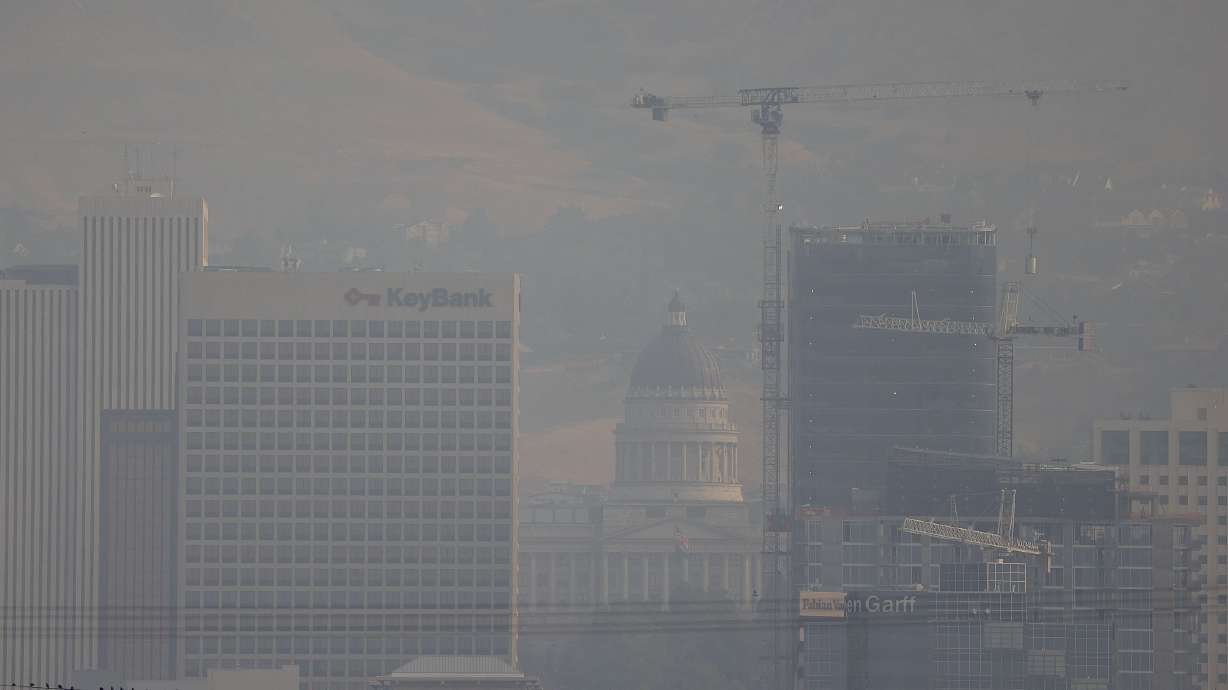Estimated read time: 4-5 minutes
This archived news story is available only for your personal, non-commercial use. Information in the story may be outdated or superseded by additional information. Reading or replaying the story in its archived form does not constitute a republication of the story.
SALT LAKE CITY — Experts already know that smoke from wildfires can lead to health issues.
Utah doctors noticed an increase in patients reporting respiratory problems last month when smoke from fires in California and Oregon wafted into the Beehive State. One study released this year even showed that hospitalizations during days of higher wildfire smoke concentration were higher than days of higher concentration from other pollution sources.
But there's one facet to wildfire smoke that researchers are still piecing together: How much of it — and other outside pollutants — ends up in your home? That's a question researchers at University of Utah Health and Salt Lake County hope to answer with a new study they began in August.
Researchers recently planted air quality monitors inside 10 homes of "at-risk families" across the Salt Lake Valley. The monitors have the ability to track particulate matter, ozone and radon. A team of researchers plans to collect indoor air quality sample data through early 2022 and compare it to air quality monitors set up outdoors.
"This project will be the first opportunity to have an objective analysis of air quality in the homes participating in the (Salt Lake) County's Green and Healthy Homes Initiative, where we get high-resolution measurements both before and after the program's interventions and updates," said Scott Collingwood, an assistant professor of pediatrics for University of Utah Health, in a statement Tuesday.
Dr. Daniel Mendoza, a research assistant professor in the U.'s Department of Atmospheric Sciences and an adjunct assistant professor of internal medicine, explained the study is meant to further figure out the differences in air quality inside and outside of homes. Since setting up the monitors, researchers say they already collected information that showed smoke from the wildfires in California resulted in unhealthy levels of particulate matter indoors.
That's not much of a surprise. Mendoza already led a study that found indoor air pollution inside the Unified State Laboratories in Taylorsville rose to about 78% of the outside pollution during days of high wildfire smoke concentration, while indoor air quality during winter inversion days reached about 30% of outdoor levels. That was published in Science of the Total Environment back in February.
Mendoza told KSL.com in March that he was curious to see how smoke from cooking or from dust also factors into indoor air quality — all things that can also be tracked in the new study he's working on.
"There is a common misconception that indoor air quality is vastly different from outdoor air quality and always better," he said, in a statement Tuesday. "Unfortunately, activities such as cooking and vacuuming can make indoor air quality worse than outdoors. Very small particles, such as from the wildfires we are currently experiencing, are able to work their way in a home through any small cracks and openings."
He said indoor pollutants, such as small particles and gases, can cause shortness of breath, chest tightening, wheezing, coughing and chest pain.
Meanwhile, the Salt Lake County study begins just as researchers at the University of California, Berkeley wrapped up another study on indoor air quality tied to wildfire smoke.
Researchers there found that particulate matter counts inside homes were three times higher on wildfire days than nonwildfire days even when homeowners used air quality filtration techniques. However, residents who closed up their homes and used indoor filtration techniques were still able to cut the amount of particulate matter inside their homes in half compared to residents who didn't.
The results, published Tuesday in the Proceedings of the National Academy of Sciences of the United States of America, were based on data collected from 1,400 indoor air sensors and many more outdoor air sensors in the San Francisco and Los Angeles metropolitan areas.
"This shows that when people have information about the smoke coming their way, they are acting to protect themselves, and they are doing it effectively," said Allen Goldstein, a professor of environmental engineering and of environmental science, policy and management at the university, and the study's senior author, in a statement.
The new Utah study is expected to help Salt Lake County leaders find ways to improve indoor air quality for residents.
"It is critical to not only improve the air we breathe outside but understand and improve the air the most vulnerable among us breathe inside their homes as well if we are going to protect the safety of residents and ensure a healthier future," Salt Lake County Mayor Jenny Wilson said in a statement.
Utah experts said residents can improve their indoor air quality without buying air filtration units, which can be expensive. They recommend residents test for radon, wash bedding and dust/vacuum regularly, clean mold, fix water leaks and use cleaning products that don't have "harsh" chemicals. More tips can be found here.









